Using Historical Footage (High School)
Why is the exchange between Welch and McCarthy historically significant?
Why is the exchange between Welch and McCarthy historically significant?
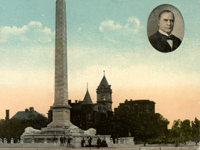
On September 14, 1901, American anarchist Leon Czolgosz assassinated President William McKinley, propelling Theodore Roosevelt onto the U.S. political stage and, some historians would argue, making way for political modernization. Through hundreds of documents and images—including book chapters, newspaper articles and columns, sermons, poetry, and government documents—this website explores the McKinley assassination alongside U.S. politics and culture before and after.
Topics include turn-of-the-century journalism, race relations, anarchism, women's roles, the death penalty, international relations, and the Pan-American Exposition in Buffalo, NY, where McKinley was shot. A good place to begin is the "Quotes About" section, which provides short excerpts from a variety of sources that serve to familiarize users with conflicting views of McKinley, Czolgosz, Roosevelt, the assassination, Czolgosz's trial, and anarchism in the United States. All documents are keyword searchable and indexed by date, author, title, type, named persons, and source. An extensive bibliography provides suggestions for further reading.

This website, which draws from C-Span Radio, is a useful resource for researching or teaching 20th-century American political history. It assembles audio recordings from such sources as the National Archives, presidential libraries, the Smithsonian Institution, and the Library of Congress. It "presents interviews, debates, oral histories, news conferences, and speeches with past presidents, legislators, and other important figures in American politics." Selecting "Past APA programs available online" provides the full list of 29 archived programs. Program subjects include persons such as W.E.B. DuBois; Indira Gandhi; Eleanor Roosevelt; NASA astronauts; Presidents Harry Truman, Richard Nixon, Jimmy Carter, Dwight Eisenhower, and Gerald Ford; and Civil Rights leaders A. Philip Randolph, Malcolm X, and Thurgood Marshall. They also include thematic topics such as the Reagan presidency, women in journalism, ex-slave narratives, Iraq war stories, Congressional leaders, the voices of World War II, and American POWs. Many of the topics feature multiple programs.
All programs are recordings of the original C-SPAN Radio program and must be listened to as originally broadcast. Playback of the programs requires media player software to be installed (free downloads can be accessed from the site).
The above recordings appear to no longer be available on the C-Span website. The history section, http://www.c-span.org/History/, suggested as an alternative offers full video programming, often discussions of historical topics. However, the page appears to feature recent video, with over 2,000 "recent events" which cannot be sorted or searched. Video search does not offer an option to select material on historical topics, so searching will pull from the entire C-Span website. As a result, the site offers a great deal of undoubtedly useful material which is nearly impossible to access. Unpublishing.
Smithsonian curators examine a photograph of civil rights activist Medgar Evers (1925-1963), looking at what it says about the tension between racial groups at the time and the call for social change an accumulation of such media objects can communicate.
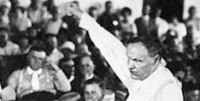
Four guided investigations designed to teach students how to read primary sources and construct historical narratives lie at the heart of this website. Topics are: the Spanish-American War, the Scopes Trial, Social Security, and Rosa Parks. Each topic includes a short introductory video, a timeline of events, a central question, and extension activities. For example, the Rosa Parks investigation poses the question: "Why did the boycott of Montgomery's buses succeed?"
After completing a simple login, students read annotated documents—including letters written by the boycott organizers, a speech by Martin Luther King, Jr. and an interview with a woman working in Montgomery—and answer guiding questions, and draw on their responses to answer the question. The website also includes a useful introduction to the idea of historical thinking.
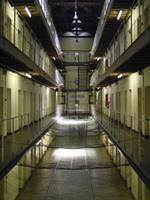
Especially since the 1950s, civil rights litigation has done much to influence government institutions. This website presents at least partial information on 2,243 injunctive civil rights cases (those seeking policy change and not money). These cases are divided by category. "Jail Conditions" and "Prison Conditions" contain the most cases, with roughly 550 each. "Immigration" and "Juvenile Institutions" also include more than 150 each. Other categories include: "Mental Health Institutions," "Mental Retardation Institutions," "Child Welfare," "Nursing Home Cases," "Policing Cases," "Public Housing," "Equal Employment," and "School Desegregation," among others.
A good place to begin is the "Featured Cases" section on the website's homepage, which highlights cases from the collection that are being litigated currently and/or that are particularly relevant to current events. Cases are fully searchable by name, type, issue, district, circuit, state, causes of action, attorney organization, and people involved in the case. In addition, links to 141 case studies written by law students, professors, journalists, and policy advocates provide in-depth information on a specific case or issue, such as the Urban Institute's "Baseline Assessment of Public Housing Desegregation Cases." New material is added regularly.
To follow the story of Lincoln's assassination, NPR's Renee Montagne accompanies James Swanson to Ford's Theatre in Washington, DC.
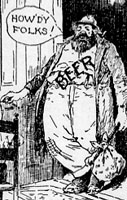
This small, but useful, website offers a wide range of primary source material for researching the history of the prohibition movement, temperance, and alcoholism. The more than 1,800 items include broadsides, sheet music, pamphlets, and government publications related to the temperance movement and prohibition.
Materials come from the period leading up to prohibition, such as an 1830s broadside on the "Absent Father" as well as the prohibition era itself, such as a 1920 pamphlet entitled, "Alcohol Sides with Germ Enemies." They end with the passage of the 21st Amendment in 1933.
All digitized items are in the public domain. An essay, "Temperance and Prohibition Era Propaganda: A Study in Rhetoric" by Leah Rae Berk provides an overview of the topic and historical context.
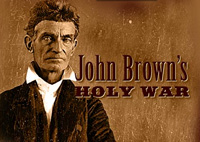
This companion site to the 1999 PBS documentary on John Brown uses special features, a timeline, an interactive map, short biographies and histories, and a teacher's guide to explain the story of Brown's life and times. The site offers special features on the Maryland farmhouse where John Brown assembled his men before their raid on Harpers Ferry, the Harpers Ferry firehouse where Brown's raiders were captured, a history of the famous song "John Brown's Body," and a short essay on Brown's failures as a businessman before he became a radical abolitionist. The timeline traces the major events of Brown's life from 1800 to 1865. An interactive map follows Brown's movements across the country from his birth in 1800 to his execution and burial in 1859. The "People and Events" section features short biographical essays on Brown, abolitionist Frederick Douglass, abolitionist newspaper editor James Redpath, writer Henry David Thoreau, 1859 Virginia Governor Henry A. Wise, and "The Secret Six"--the radical abolitionists who funded Brown's raid on Harpers Ferry. The section also features short histories of four events of Brown's radical abolitionist crusades: the Pottawatomie Massacre in Kansas, Brown's Missouri raid, the Harpers Ferry raid, and Brown's hanging. The teacher guide offers discussion questions and four classroom activities.
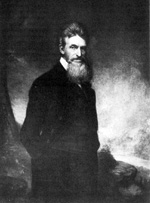
Using contemporary newspaper accounts, eyewitness testimonies, photographs, maps, drawings, and later texts, this site presents "narrative threads" linking the events leading up to John Brown's raid in 1859 on the Harper's Ferry arsenal to "the latent history of life in the two Shenandoah Valley towns of Staunton, Virginia, and Chambersburg, Pennsylvania." Includes 13 issues of newspapers from the towns; five eyewitness accounts ranging from 2,500 to 9,800 words in length; 30 images of the Brown family members and conspirators; approximately 25 additional photos, published drawings, and maps; a brief listing of Brown's day-to-day movements during the latter half of 1859; and short biographical entries of up to 500 words on each conspirator. This site, parts of which are presently under construction, will be of special interest to teachers who want to use contemporary images and written accounts in their classes on Brown and abolitionism, and for those looking to investigate local history perspectives on events of national importance.